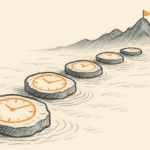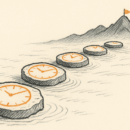The shilling is weak. So where are our exporters?
Last week I discussed the manic dance of the Kenya Shilling in this column. I wondered whether our economic “fundamentals” are as sound as many claim, and whether this phenomenon of low-currency-high-interest-rates-high-inflation will go away any time soon.
I also wondered why we have accepted a persistent trade deficit for so long. Kenya exports way less than it imports, by billions of dollars. We don’t produce most of the things we regard as essential: oil; machinery end equipment; vehicles; industrial inputs; computers and mobile phones. Increasingly, we don’t even want to consume things that we do produce locally.
Equally, we have failed to diversify away from our staple exports: tea-coffee-flowers-vegetables-fish-landscapes. Our exports look pretty much the same as they did when I was a boy.
This is what lies at the heart of the problem. We are all-too-willing to import heavily and then cover ourselves not with export revenues, but with financial inflows, most notably remittances from our diaspora and project aid from our donor friends. This, I submit again, is not a sustainable model.
Many countries rejoice in low exchange rates. China has been accused for years of keeping its currency deliberately undervalued against the dollar, to boost its export economy. South Africa seems to do the same in Africa, to help its relentless penetration of neighbouring markets. If you visit southern African countries, you might be forgiven for thinking everything they consume comes from their giant neighbour.
So why is it that when the currency falls in Kenya, we hear only cries of anguish? Why are our exporters not rubbing their hands in glee? Surely this is the chance they were all waiting for, to price lower in dollars and saturate all those waiting markets?
Here’s why: on the supply side, many of their inputs are imported: petrol, vehicles, fertilizers, pesticides, expatriates, machinery and the like. So they face a rising cost bill just like everyone else. And on the demand side, they are up against a multitude of competitors, many of them more competitive on price AND quality, and many of them supported actively by their own governments. That’s why no one is jumping for joy. The weak shilling will bring high inflation and high interest rates in its wake, but may do little for the trade deficit.
This reveals two things: a deficiency in our long-term economic strategy; and a shortage of ambition on the part of our business people. Are there Kenyans scouring the globe looking for export markets, the way the Chinese, Indians and Germans do? Are there Kenyan brands that sell themselves thousands of miles away, like Google and Toyota do here?
Our reliance on non-essential imports is growing, but why is that? It is because Kenya crawls with foreign entrepreneurs looking to sell. So why are our boys content to be homeboys? Africa should be Kenya’s big export target, but it is only now that our larger companies have anything like a presence even in our immediate neighbours. And I note that Kenyan executives have a marked aversion to living away from home. That is not the stuff export champions are made of.
The nub of the matter is this: we have to compete with the best. We have to have ambition, have to build brands, have to have compelling selling propositions for our goods and services. We have to sell on quality and reputation and availability, not just on price. We have remarkable advantages in location and human capital, but we are yet to use them for maximum gain.
If we fail to focus on competitiveness as a concept and a strategy, we will have to rely on a declining currency as a corrective. But that will be bitter economic dawa, one that will cause many new pains in the body Kenyan.

Buy Sunny Bindra's new book
The X in CX
here »
Popular Posts
- Where are you rushing to—your funeral?June 29, 2025
- How to spot a real thinkerJune 15, 2025
- The map will appear—once you start walking.July 6, 2025
- Built the app, forgot the flowJune 22, 2025
- The pause that saves usJune 8, 2025















